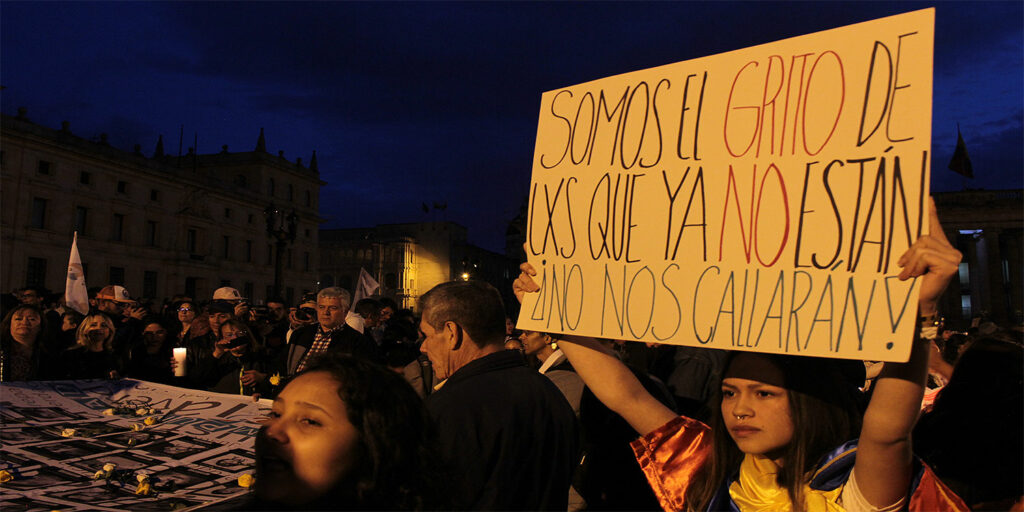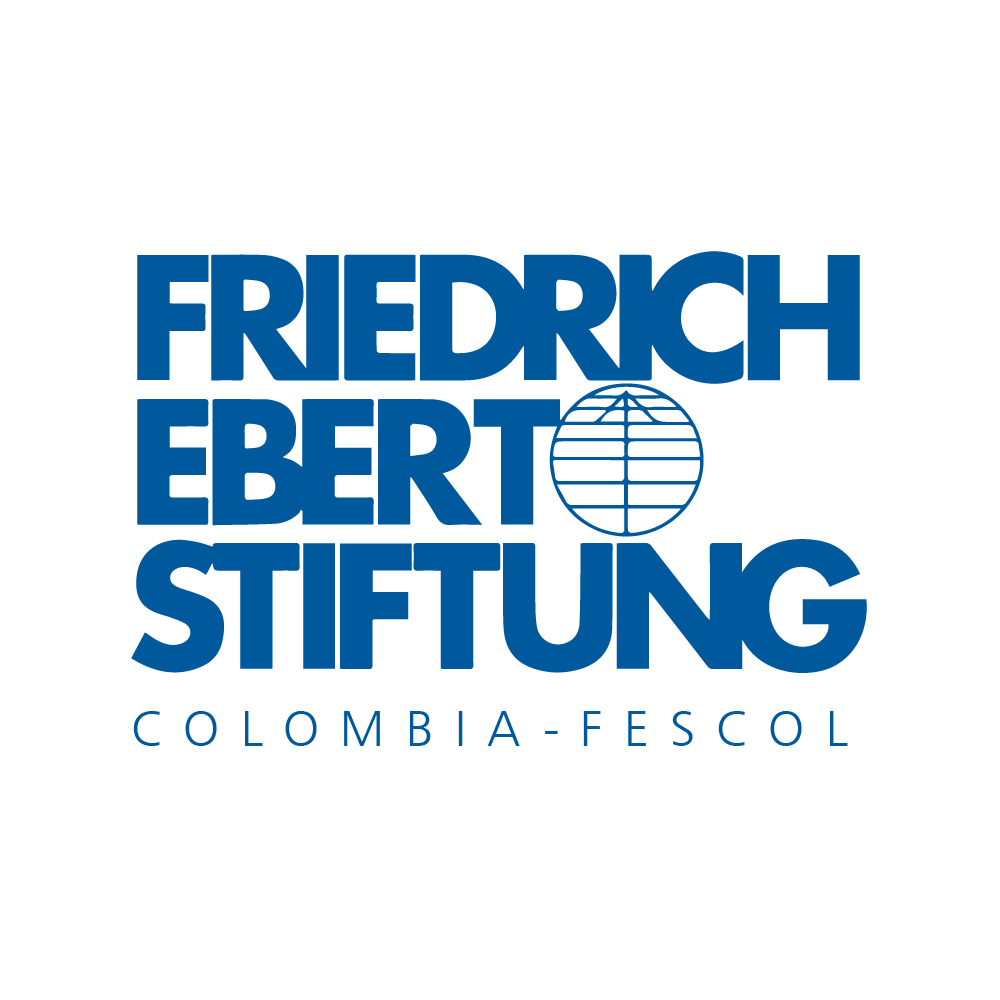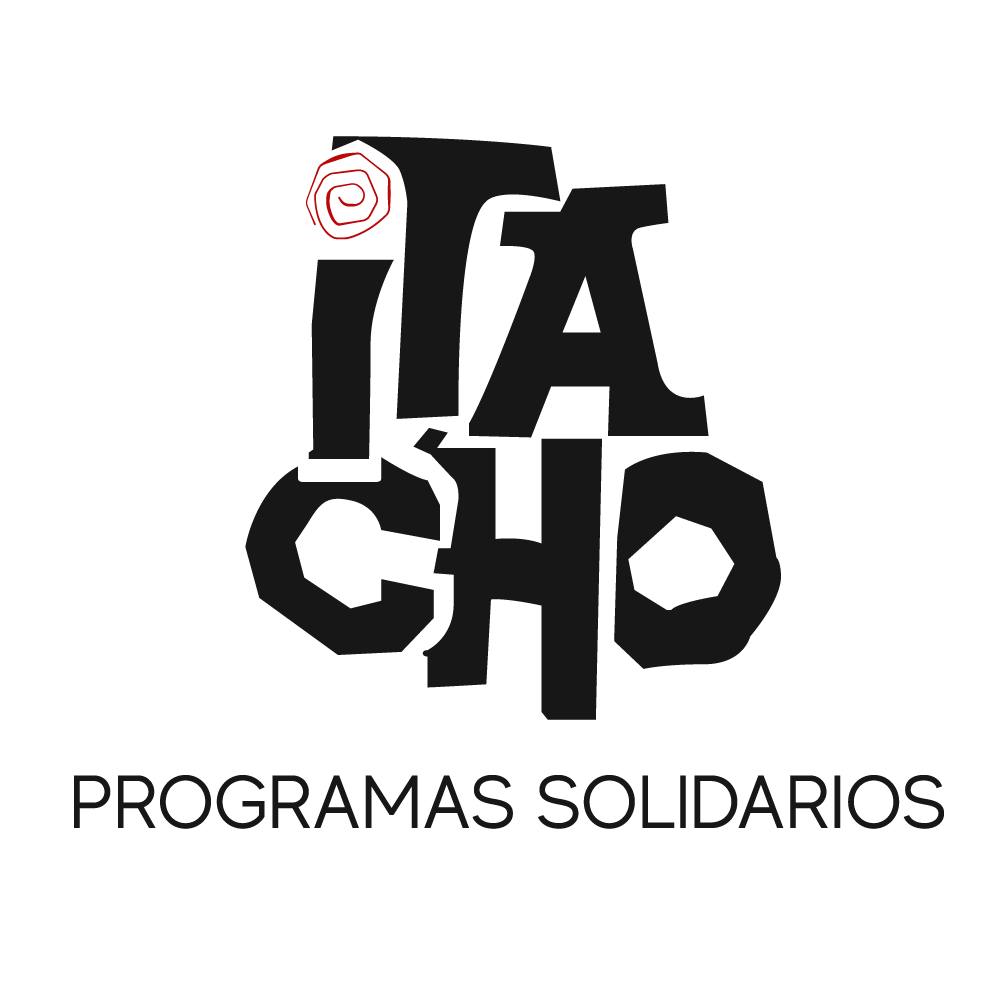The situation of leaders and ethnic authorities in Colombia has not been the most favorable since the Colombian State signed the Peace Agreement with the now defunct FARC guerrillas five years ago. They face multiple risk scenarios in their daily work on behalf of the most vulnerable communities.
The grueling reality they face is far from the hope that was envisioned after the government of then President Juan Manuel Santos (2010-2018) and the extinct FARC guerrillas took steps to put an end to an armed confrontation that lasted for 53 years. Many thought that, finally, they would be able to carry out their social work and the defense of human rights without tension or fear. The figures show another side.
According to the records of the non-governmental organization We are Defenders, which since 2002 documents all kinds of aggressions against social leaders, between November 24, 2016, the day the Peace Accord was signed, and last September 30, 682 people committed to defending the rights of various communities were killed.
This death toll takes on a more absurd dimension when we broaden the spectrum of time: the figures reveal that the search for peace ended up detonating a wave of violence that worsened over time. During the peace negotiations, between 2012 and 2016, killings fluctuated, surpassing the records of previous years, but took a drastic upturn when the implementation of the Agreement began in 2017.
The so-called post-conflict period ended up being lethal for human rights defenders and full of paradoxes. One of them was in 2017, when the FARC demobilized and the country recorded the lowest homicide rate in 40 years, but for the first time the threshold of 100 social leaders murdered in a single year was surpassed. Likewise, although the current year will probably end with fewer murders than the last three, in its third quarter there were more cases than in the years prior to the beginning of the peace negotiations.
According to We are Defenders‘ monitoring, the regions with the most murdered social leaders since the signing of the Peace Accord are Cauca, with 171 cases; Antioquia, with 95; Nariño, with 54; Norte de Santander, with 45; Valle del Cauca, with 45; Putumayo, with 43; Chocó, with 32; Caquetá, with 31; Córdoba and Arauca, both with 19.
Multiple concerns
One of those voices hopeful about the Peace Accord was that of Maydany Salcedo, a peasant leader for almost two decades. She took her first steps in social leadership working with children in the municipality of San Vicente del Caguán, Caquetá, to whom she taught the importance of the 1991 Political Constitution.
“I worked with a circle of children, called Círculo de Lectores (Circle of Readers). From that time on, the desire to teach children and to discover what was happening in my country was born with a growing interest and I stopped being just a common housewife,” recalls Salcedo.
Her involvement with the National Federation of Unitarian Agriculture Union (Fensuagro) took her to Piemonte, in the region of Cauca, in 2012. She is currently the legal representative of the Municipal Association of Workers of Piamonte (Asimtracampic). She arrived in that area the same year that peace negotiations began in Havana, Cuba.
Five years after the peace agreement, she does not contain the anger in her voice, a product of the disappointment of feeling that they have had to carry the Agreement on their shoulders: “The government was not interested in the peace agreement, we were interested in the people who believed or thought or dreamed of a different country. So that was our great illusion, that it would be signed, but even the plebiscite went against it and then we, social organizations, took the Agreement on our shoulders”.
Salcedo is a fierce defender of the rights linked to land ownership and the voluntary substitution of illicit crops, and for this reason she is a regional advocate in the process of listening to the communities. After the signing of the Peace Agreement, she says that for a year and a half she was able to move around different areas of Cauca without problems, but then the disputes between illegal armed groups returned and the risks increased.
“If the government had complied with the Agreement, with the restitution of land, it would have been a different story, but the government was not interested in complying with the agreement, with the voluntary substitution. This is a business that comes from above and that has led to us being in dispute in our territories,” says Salcedo with a hint of anger.
In addition to the complaints of this peasant leader, Víctor Moreno, former senior advisor of the Association of Community Councils of Northern Cauca (Aconc), also suffers from the tensions generated by his social work.
Moreno highlights what he experienced months after the signing of the Peace Accord, highlighting the tranquility and security in the municipalities of northern Cauca and southern Valle del Cauca: “I was able to visit places I never imagined I could have visited, such as Buenos Aires, up in Cauca, for a symbolic surrender of weapons. Now it is almost impossible to go there again”.
Moreno participated in the construction of the ethnic approach in Havana, Cuba, in the last stage of the negotiations and ever since Aconc has focused on the defense of the environmental rights of black communities. His concern is also focused on the degradation of regional security.
“There has been an increased paramilitary presence in the territory. Today we have a community called Mazamorrero (Santander de Quilichao, Cauca) where practically all the families had to move out of the territory because a person from the dissidents (of the former FARC) was murdered nearby and I do not see a return plan, these families are dispersed”, says Moreno.
And he questions some of the executions linked to the Peace Agreement in the territory where he exercises his leadership: “Here we have not seen more than the PDET (Development Programs with a Territorial Approach); the demining issue has not advanced; it started, but I believe that there are territories with more antipersonnel mines; and businessmen have only invested in areas where they can take some advantage of them and not in the community per se”.
Another critical voice is that of Ana Deida Secué, indigenous leader of the Nasa people. Her analysis is also based on the optimism that was experienced during the peace talks in Havana: “In four years of negotiation, it generated a lot of expectations and a lot of desire. We worked on this peace agreement so that it would come about in Colombia, but not without some concerns, which became a reality.
This leader has been working for more than 20 years at the head of her communities as a member of the Association of Indigenous Councils of Northern Cauca (Acin), she is recognized by UNESCO as a teacher of wisdom and currently belongs to the Regional Indigenous Council of Cauca (CRIC).
Her authority and experience lead her to state that the implementation of the Peace Agreement in her territories of incidence was blurred five years after it was signed: “We see that they have not represented us, we had a lot of hope in its signature and in its development, how it was going to be implemented. But with the current president, the Agreement is torn to shreds, its work unknown and delegitimized, and now we are in a crisis of extermination that ignores and destroys the Peace Agreements”.
This violence, says Feliciano Valencia, senator of the Alternative Indigenous and Social Movement (MAIS), “happens in many cases because it is the indigenous communities that carry out territorial control exercises to mitigate drug trafficking, violence and conflicts in their territories”.
And he refers that due to the continuity of the armed conflict there have been areas vetoed by the institutions because of forests, mountains and difficult areas to access “the guerrillas used to plant there”.
With the demobilization, adds the Senator, “those lands have been left at the mercy of atomized armed groups, many of which keep the drug trafficking business alive, but it turns out that those lands, those zones and regions have been ancestral territories that the ethnic communities have been recovering and trying to maintain and preserve because in several cases they are strategic ecosystems and areas of environmental protection”.
But this territorial control requires, according to Valencia, the accompaniment of the State to prevent the indigenous people from being more visible and immediate targets of an increasingly degraded violence. “By State accompaniment we do not mean military presence because there is plenty of that: Cauca, for example, has the municipalities with the highest number of soldiers in the country, such as Argelia, and that is one of the municipalities where most violence is experienced. That is why the accompaniment of the State is of integral attention, guaranteeing basic rights such as health, education, work, and that young people have real opportunities, other than being recruited by illegal armed groups or by the Army and the Police”.
He concludes his analysis by suggesting that “the exacerbated violence is also evidence of non-compliance with the Peace Accords”.
The risk of exposure
As evidenced by Salcedo, Moreno and Secué, the first year after the signing of the Peace Accord generated a sense of tranquility and security that led dozens of leaders and ethnic authorities to speak out publicly in favor of the agreements reached in Havana and to strengthen their implementation, but those who opposed what was achieved on the Caribbean Island lurked in the shadows.
Arnobis Zapata, a peasant leader from the south of Córdoba, who has worked hard to position himself as territorial coordinator of the Southern Córdoba Peasant Association (Ascsucor), president of the National Association of Peasant Reserve Zones (Anzorc) and national spokesperson for the National Coordination of Coca, Poppy and Marijuana Growers (Coccam), gives account of this risky situation.
“When the Peace Accord was signed, the leaders began to come out, to make themselves visible, even some who had never left their villages, became targets,” said Zapata.
But the lack of a quick action by the State to monopolize the territories left by the former FARC on their way to reincorporation into legal life, the rearmament of some ex-guerrillas and the atomization of illegal armed groups interested in hindering the implementation of the Peace Agreement, pointed to these social leaders in ebullition.
“Today the situation is very complicated”, Zapata highlights and specifies the consequences: “After all the assassinations, many leaders have withdrawn, they don’t want to know anything about leadership and organizational processes. Some of the circumstances are that a few of them are subjected to the rules imposed by the armed groups and others have opposed doing what the armed groups tell them to do and have had to leave”.

The leader Salcedo bursts into tears when she tries to answer why people like her suffer these pressures: “We, the peasant leaders, the social leaders and the defenders of rights, I don’t think we are hurting anyone, I don’t know why they are looking for us to kill us. We want to defend the Peace Agreement and we are going to defend it with our heart and soul”. And she emphasizes: “If you have to give your life, it is better to give your life standing up than kneeling down”.
Diana Sanchez, director of the Minga Association and with extensive experience in the defense of human rights, explains that violence against social leaders has increased because “those who have carried the banner of a better quality of life are the leaders”.
This work has also been stigmatized by what Sanchez calls “the establishment”, which associates leaders with the armed insurgency: “And they continue to kill them because they have justified claims”. This has resulted, according to her, in two circumstances that aggravate the situation: on the one hand, the strengthening of militarization in some regions of the country, which prevents leaders and ethnic authorities from having full mobilization; and on the other hand, that, as a consequence, communities lose contact with their spokespersons.
Senator Valencia adds that the interlocution with the national government is not the most adequate and to exemplify this statement he refers to a recent session of the Permanent Table of Concertation, held in Bogota.
“The delegates of the Ministry of Interior, facing the security demands of the communities, referred to the Plan of Timely Action (PAO), which was issued in 2018, stating that this is the main tool to provide security guarantees to social leaderships. But referring to the facts, and the violence statistics, the question then remains as to whether the government is finally saying that this growing violence, the murders, the massacres, could have been even worse,” Valencia details.
“And if so, it is infamous -adds the Senator- because every life lost in such an act of violence should be repudiated and should have been protected. Therefore, one cannot agree with the government that the protection mechanisms and security guarantees provided through the PAO have been sufficient.”
Does the State protect?

The institution responsible for the security of human rights defenders is the National Protection Unit (UNP), attached to the Ministry of the Interior. In the event that a person or a community is a victim of threats due to political, public, social or humanitarian activities, they may request an evaluation of the situation in order to determine what type of security scheme they require, in application of current regulations.
In relation to the implementation of the Peace Agreement, the Kroc Institute of the University of Notre Dame, in charge of monitoring the implementation of the Havana agreement, highlights that the UNP strengthened its Specialized Sub-Directorate with the incorporation of 40 risk analysts and 686 men and women assigned to protection.
Sánchez, from Minga, has a critical stance on the UNP: “I have never agreed with the fact that we are filled with security schemes. For example, the panic button, I won’t be able to activate it if I get a bullet in the back. I don’t agree with physical measures, there must be guarantees and a change of context because it prolongs the problem”.
For this activist, the excess of security schemes not only takes the protected people, many of them leaders and ethnic authorities, out of context, but also distances them from the community “and puts them in a different status, puts them in a bubble. This has political, social and economic implications and they can get used to the schemes, even if there is a change of context”. In this sense, he considers that the security risk goes far beyond having security schemes: “It is necessary to have constant guarantees so that it is not necessary to resort to these schemes”.
Senator Valencia, on the other hand, recognizes that there are some mechanisms that the State has provided for the security and protection of social leaders, but, in his opinion, “reality shows us that the figures show that these mechanisms are not working”.
These types of difficulties were also contemplated by the Attorney General’s Office (PGN) in its Third Report on the Implementation of the Peace Agreement, submitted last August to the Congress of the Republic.
In that report, the Public Prosecutor’s Office highlighted the publication of the Risk Analysis Protocol for Women Leaders and Defenders of Rights, however, it indicated that “there is no clarity regarding the progress in its implementation, especially in the incorporation of the gender approach within the entity to ensure that the actions carried out respond to the provisions of the Protocol. At the same time, it is necessary that the UNP advances in the development of a Protocol for the attention and punishment of cases of sexual violence and other forms of gender-based violence by escorts against the beneficiaries of its protection programs”.
Despite so many difficulties, leaders and ethnic authorities continue to work in their regions to achieve the goals proposed in defense of the rights of their communities and the environment. Peasant leader Salcedo explains: “We are protecting 1,680 hectares of primary forest; we are protecting 160 hectares of stubble forest that is being recovered. We have a plant for the transformation of Amazonian products, we work with communities that are committed to change.
And he adds: “We have human rights schools, environmental care schools, gender equity schools, youth schools, with resources that sometimes come from the peasantry. So, I don’t understand why they are looking for us to kill us, why they threaten us, why they persecute us. I do no harm to anyone; I take care of mother earth”.




